
Urban Wildlife Guide Tracks in the Snow
Opossum tracks have often been compared to the shape of a star. This is because of the toes that splay out from the center. Their paw prints also look similar to a human child's handprints. Opossums have opposable thumbs, which look like human thumbs. A possum's front feet have five toes with a nail on each toe.
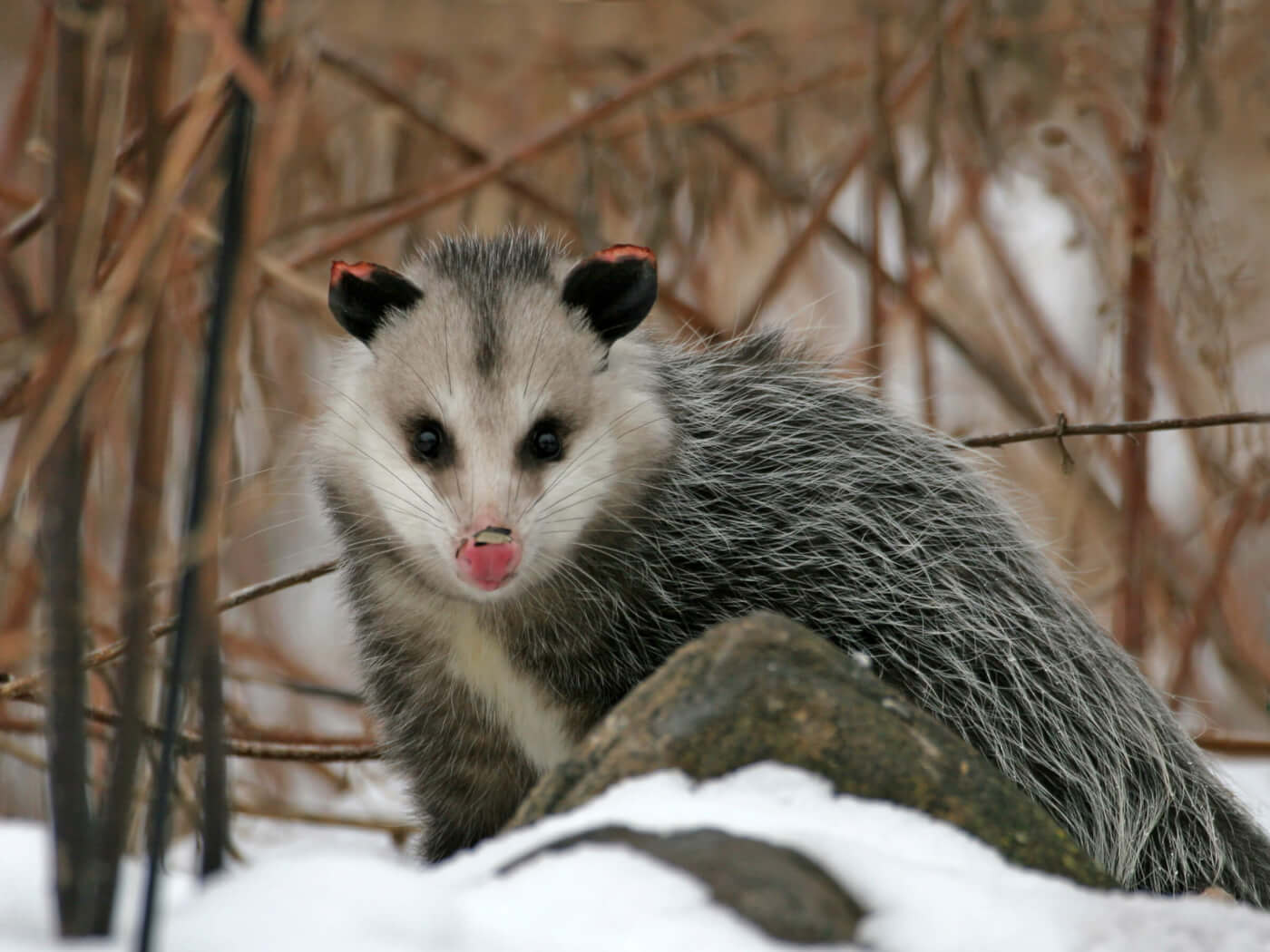
You Won't Believe How Far People Will Go to Abuse Opossums PETA
Learn how to identify common animal tracks in snow, mud and sand. Detailed illustrations and photos of wolf, coyote, fox, dog, cougar, lion tracks and 30 more.. Opossum Tracks in Snow. Opossum tracks are similar to raccoon tracks. The opossum's large opposable thumb on the back foot is splayed out more and lacks a claw.
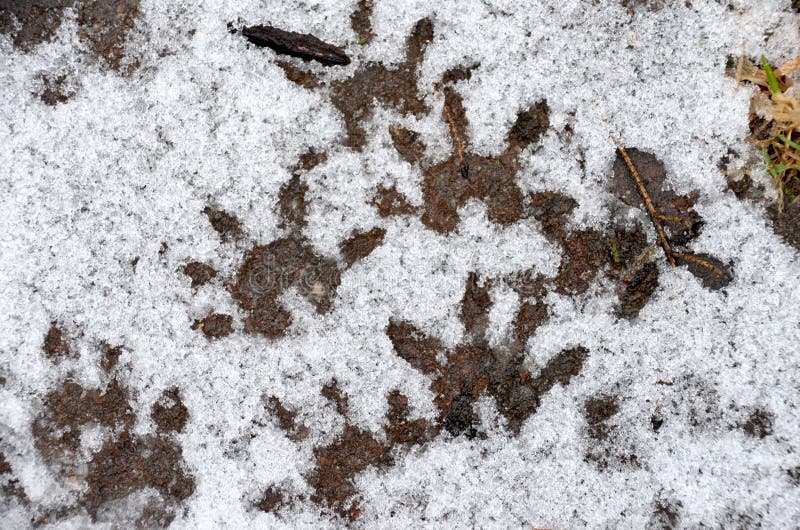
Opossum in snow stock image. Image of stepping, face, nose 3813361
Photo of Virginia opossum tracks in the snow along with illustrated front and hind tracks and the track pattern of an opossum. Photo: Willowbrook Wildlife Center and Illustrations: Dan Goodman Virginia opossum tracks in snow. Note how the hind tracks overlap the front tracks. Photo: Willowbrook Wildlife Center Front track of opossum in snow. Photo: […]

Backyard Beasts December 2012
Opossum tracks are very recognizable, since each foot has five toes and the rear tracks look like those of an infant child. This human resemblance is because the inner toe of each hind foot is opposable like a human thumb. Front prints are around two inches in diameter while hind prints are moderately larger. They are commonly found in the snow.
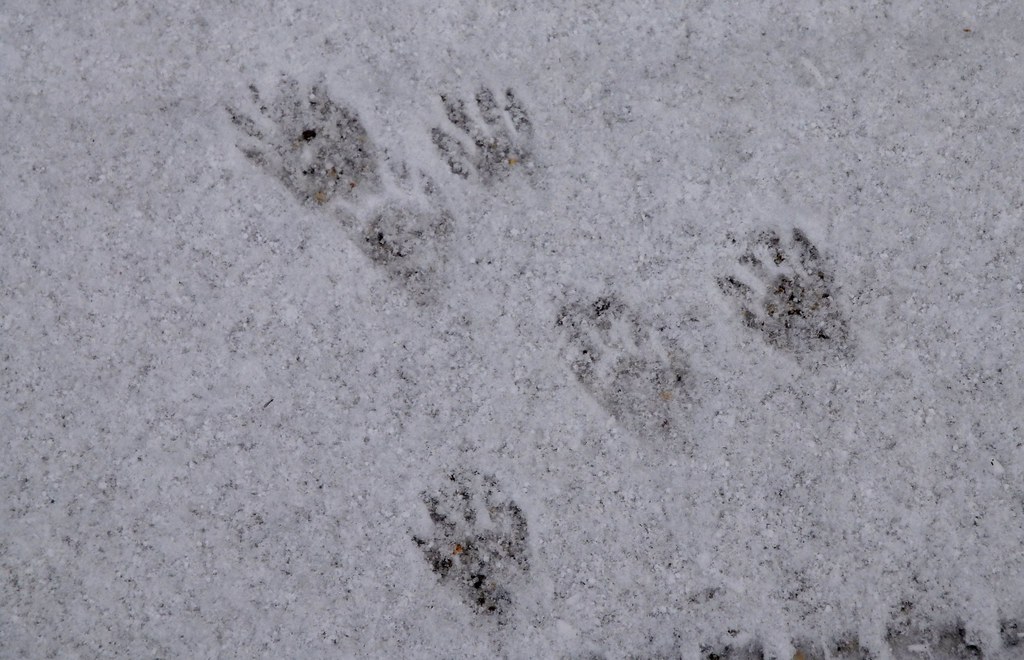
Raccoon tracks in the snow a photo on Flickriver
A good set of opossum tracks. These are the prints of the left hind and left front paws. Notice the large opposable thumb on the hind track, which is the lower one. A nice front opossum track in snow. Photo donated. (Thank you!) A pair of opossum tracks in snow.

Backyard Beasts RIP Dustmop...?
In snow, opossum tracks can be difficult to distinguish from other small mammal tracks. However, opossum tracks are generally smaller than raccoon tracks and have a distinctive shape. The hind feet resemble a human hand, and the front feet have an opposable thumb, which makes the track look like a small handprint.

Opossum Enjoys a Sunny Winter Day in Toronto
Here are a few tips: Animal tracks are easiest to find in mud, soft garden soil, sand, and snow. Study the ground closely. Get down on your hands and knees. Note the size of the track and whether it shows claw marks. You may wish to make a sketch. Track early in the morning or late in the day when shadows make prints easier to see.

Opossum Tracks The Ultimate Guide Assorted Animals
Opossum Tracks In Dirt. On the left, is opossum tracks on the right raccoon tracks, front and back paws. The opossum tracks also have a smaller front and a longer back track but the shape is very different with the toes clearly spread out. One clear sign you are dealing with opossum's problem is the spread out toes, these often look like.

Opossum Tracks Identification Guide for Snow, Mud, and More
Opossum tracks have five digits and are 2-3 inches in length and width. The back feet are a little larger and have been compared to a small child's feet.. Opossum tracks vs raccoon tracks - Size chart. Possum Tracks in Snow. Since possums live in forest regions, these areas can overlap with places that have snow and even some mountainous.
Nails and Sawdust Critter tracks in the snow
You can identify opossums by their droppings. Animal tracks are almost always found near animal droppings, so another good way to tell if there is an opossum on your property is to look for droppings. Traditionally, opossums defecate in leafy, private areas. Their feces are about 1 to 3 inches long and can resemble cat or dog droppings.

opossum tracks Raccoon and Opossum tracks Sandhill Nature Education Blog Opossum tracks
Younger opossums will have smaller tracks, while larger adults will leave larger and more distinct prints. One unique feature of opossum tracks is the presence of claw marks. Opossums have sharp claws that are used for climbing trees and gripping surfaces. These claws often leave marks in the snow, especially in the front feet tracks.
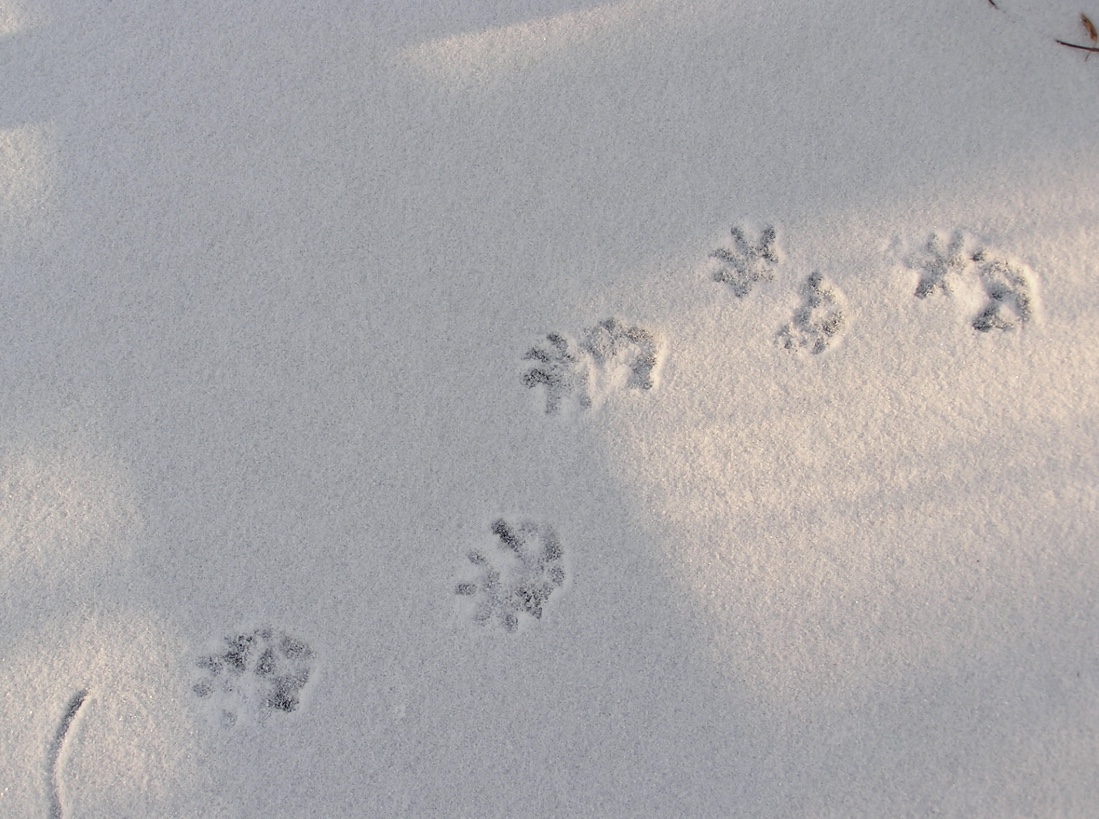
Virginia Opossum Wildlife Illinois
The useful anatomy allows the opossum to grasp and hold branches in a manner similar to a human hand. They also use the feet to groom themselves. The tail usually leaves a drag line in the dirt between the tracks. Kids: Sprinkle flour in your yard at night, with parents' permission. Check in the morning and see if you can find opossum prints.
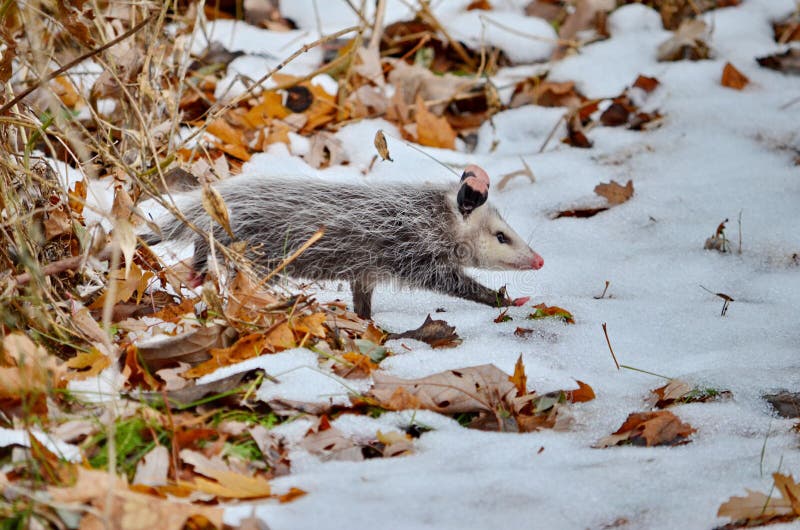
Opossum in snow stock image. Image of stepping, face, nose 3813361
On the left, raccoon tracks, front and back paws, on the right opossum tracks. The opossum tracks also have a smaller front and a longer back track but the shape is very different with the toes clearly spread out. One clear indication that you are dealing with opossums is the spread out toes, these often look like little starfish.
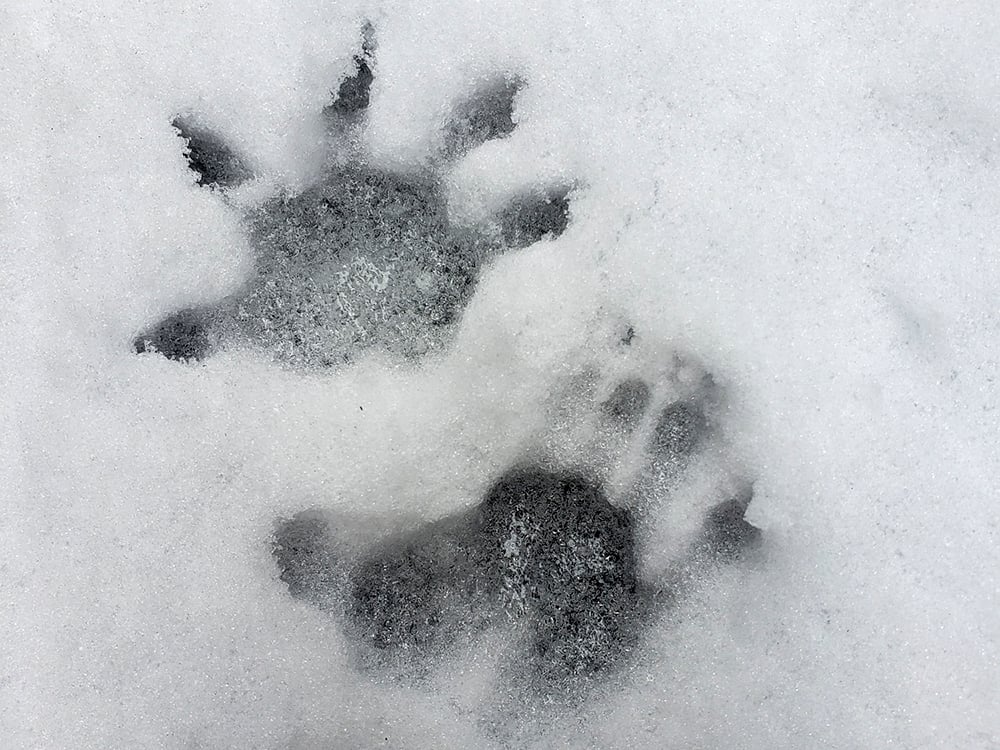
Tales as Old as Time
Opossum tracks are somewhat similar to those of a raccoon; in some situations they can be difficult to tell apart. But usually you can tell the opossum because its fingers appear splayed, giving the impression of a human hand that is spread out.. Rabbit tracks in snow with prairie grasses at Deep Well Wildlife Management Area Prairie, a.

January Snow, Tracks, & Mysteries! Groundswell Conservancy
Moose. Moose tracks look very similar to those of deer and elk in shape, but the size can help you determine which ungulate made the print you're looking at. Moose prints tend to be 5 to 6 inches in length, while elk leave roughly 4-inch tracks. Deer prints tend to be roughly 3 inches long. A moose track in the snow.
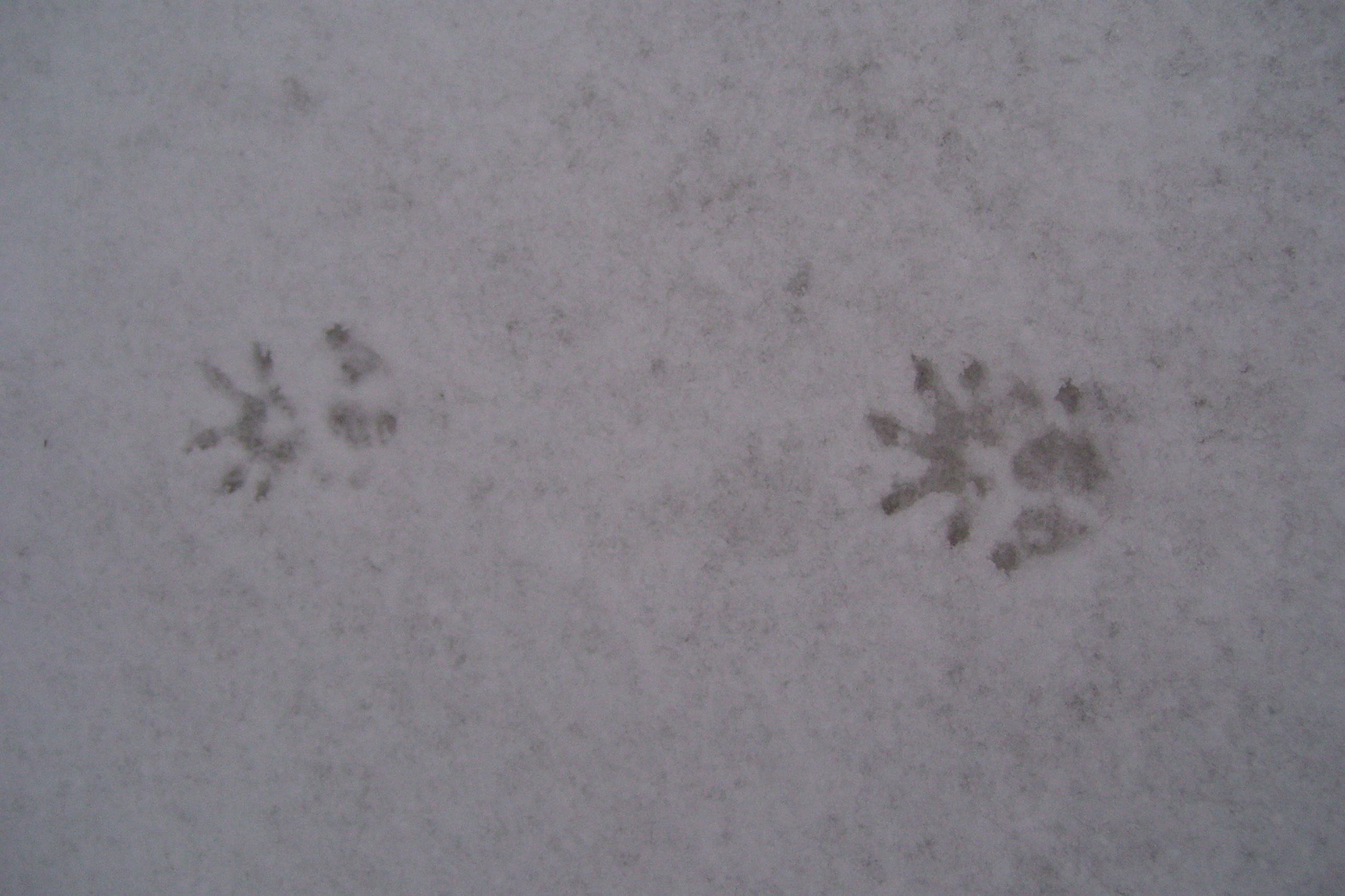
Ripples 2/21/19 Woodland Dunes Nature Center and Preserve
Opossum tracks are easily recognizable. Each foot has five toes and their opposable thumb makes for a unique print that resembles a human thumb. If an opossum is on your property you will likely see tracks along deck railings, downspouts, trees and other structures. Opossums will use these areas to gain entry to your home or find food.
- Skechers Women S Easy Going Cozy Escape Zip Boot
- Battle Of The Brews Surrey
- Indri Whisky Price In Canada
- Samsung S22 Ultra Open Box
- 21 Day Fix Guide Pdf Français
- 221 Union Street Vancouver Bc
- Poitrine De Poulet Au Four Cuisson Lente
- ویتامین های محلول در چربی
- Danby Air Conditioner Exhaust Hose Connector
- Maison A Vendre Ste Foy Sillery